#Piero Drogo
Explore tagged Tumblr posts
Text
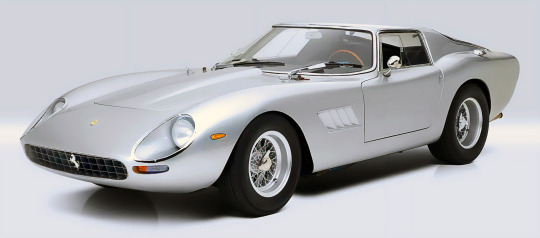
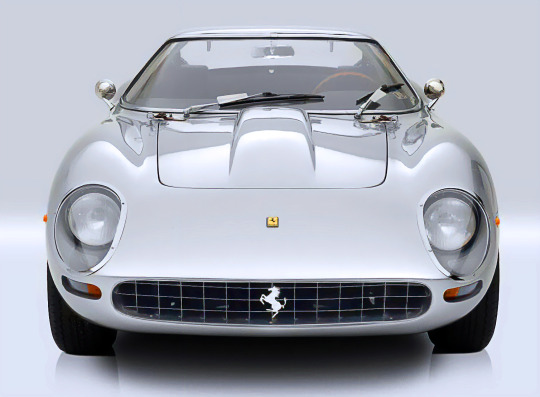

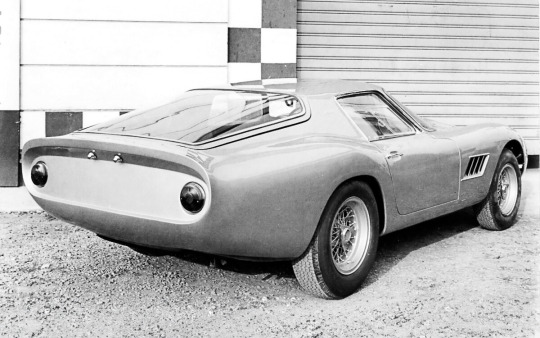

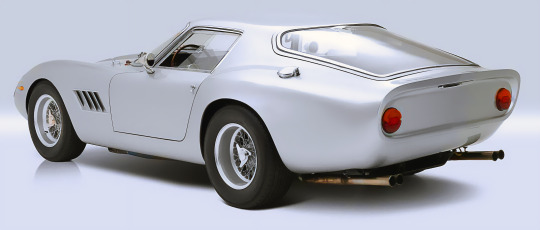
Ferrari 250 GT, 1960, by Drogo. Chassis number 1717 GT started life with Pininfarina styling but after an accident in the Swiss alps it was returned to Modena for repair and new bodywork by Piero Drogo.
source
#Ferrari#Ferrari 250 GT#Ferrari 250 GT Drogo#one-off#coachbuilt#Piero Drogo#V12#1717 GT#1960#1960s#sports car
497 notes
·
View notes
Text

1967 Ferrari Dino 206 Competizione Competition Berlinetta
Alfredo 'Dino' Ferrari was credited with the design of the Ferrari V6 engine. With help from the legendary engineer Vittorio Jano, Dino influenced Enzo Ferrari's decision to produce racing cars in the 1950s powered by V6 and V8 engines.
Enzo Ferrari was hesitant to adapt the mid-engine layout for his customer cars, fearing they might be unsafe. He eventually relented and Sergio Pininfarina was tasked with designing a mid-engined concept for the 1965 Paris Motor Show, but demanded that it wear the Dino badge alone. At the Turin car show in 1966, the Dino 203S was well receipted and production soon followed.
The production Dino 206GT had many updates, modifications and changes such as softer edges and curving lines typical of earlier Italian cars. The 2-liter all-aluminum engine was transversely-mounted mid-ship and offered 160 horsepower. The V-6 engine featured dual overhead camshafts and 9.7:1 compression ratio. The crankshaft featured four main bearings with induction via three Weber 40 DCN/4 2-barrel carburetors. The frame of the 206GT was made from lightweight aluminum and fitted with full independent suspension. Disc brakes could be found at all four corners. The wheelbase of the car measured a short 90-inches. Top speed was a very impressive 146 mph. In total, there were only 152 examples built during 1968 and 1969.
This unique prototype followed the Dino 206 racing cars that raced at Le Mans and were powered by the Dino V6 engine. First seen at a 1966 Ferrari press conference, the standard 206 was bodied at Piero Drogo's Carrozzeria and featured light alloy bodywork and a semi-monocoque chassis. Only 18 were built, so the model was restricted to the Group 6 prototype class. This one-off 206 chassis, built by Ferrari, then went to Pininfarina to receive a new custom body. The plan was to use race-car engineering in a road-going supercar; it used an engine from one of three Dinos that raced at Le Mans in 1966. Designed by Paolo Martin, the car was shown at the 1967 Frankfurt Auto Show as a 'Dino' Berlinetta Prototype Competition, to much acclaim. Pininfarina preserved the car in their private museum until 2006, when they offered the current owner the opportunity to purchase the car and become its first owner.
#Ferrari Dino 206 Competizione Competition Berlinetta#car#cars#Ferrari Dino 206#berlinetta#ferrari dino#dino#ferrari
30 notes
·
View notes
Text
Ferrari 312P Coupe n.19, 1969
The Ferrari 312P Coupe is a car that attempted to participate in the 24 Hours of Le Mans 1969. After the scorching defeats suffered in 1966 by the Ford in the Sport Prototype Championship, the Maranello team replaced the Ferrari P3 with the new model P4. Designed by Piero Drogo, the car was much more powerful and underwent some changes during the season.
The Italian SPA Ferrari Sefac team with Chris Amon, Peter Schetty at the wheel of the Ferrari 312P Coupe n.19

Ferrari 312P Coupe designed Giacomo Caliri with aluminum and fibreglass panels.
Ferrari 2990 cc 60° V12 || Power: 313 kW (420 British horsepower || Drive Type: Rear wheel drive || Transmission: Ferrari five speed Manual || Suspension front: Double wishbones, coil springs, Koni shock absorbers, anti-roll bar.
Suspension rear: Double wishbones, coil springs, Koni shock absorbers, anti-roll bar || Brakes: Ventilated discs all round || Tyres: Firestone.
#ferrari f8 tributo#ferrari strategy#ferrari racing#ferrari formula one#ferrari red#ferrari style#racing#racetrack#racetrack newsies
1 note
·
View note
Text
Ferrari 330 GT 2+2 Navarro
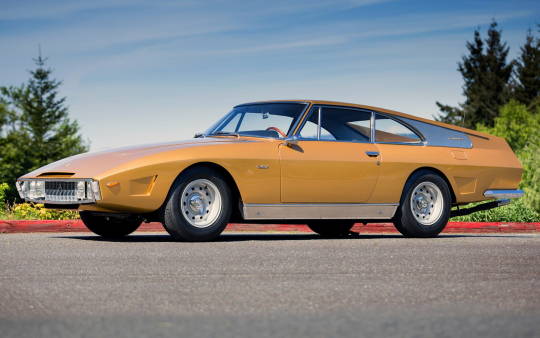
La carrosserie de la Ferrari 330 GT Navarro Special de 1966 a suscité plus d'une controverse au fil des ans.
La Ferrari 330 GT 2+2 Navarro de 1966 avec une carrosserie très étrange (pour ne pas dire moche) de Drogo, commandée par le propriétaire de boîte de nuit italien Norbert Navarro en 1967/1968. Photos / Ferrari 330 GT 2+2 Navarro


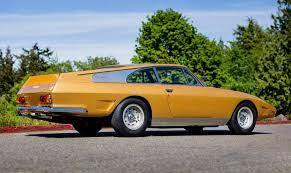

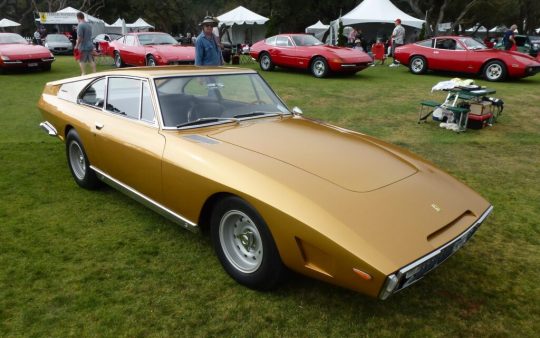
La voiture de Navarro est connue sous une série de noms, dont la « Voiture dorée », à la fois pour sa peinture et pour son logo latéral ; la "Ferrari 330 GT 2+2 Speciale", peut-être le nom le plus générique de la voiture ; et le « Navarro Special NART », pour son association ultérieure avec l'importateur Ferrari américain Luigi Chinetti. Bien que la carrosserie puisse différer radicalement d'une Ferrari 330 GT 2+2 d'origine de 1966. Sous la peau, les deux voitures sont pratiquement identiques. La puissance provient d'un V12 de 4,0 litres! évalué à 300 chevaux et couplé à une transmission manuelle à cinq vitesses. La disposition - un moteur avant, une propulsion arrière et un essieu moteur utilisé à l'arrière au lieu d'une suspension entièrement indépendante. Des freins à disque - installés aux quatre coins. Ferrari – Le constructeur italien de supercars et de course de Formule 1 Une carrosserie qui suscité la controverse La carrosserie de la Ferrari 330 GT Navarro Special de 1966 a suscité plus d'une controverse au fil des ans. Certains se demandant pourquoi le magasin de Piero Drogo, Carrozzeria Sports Cars, entreprendrait même un tel projet. Drogo est décédé dans un accident de voiture en 1973, sa motivation ultime est donc perdue pour l'histoire, mais cela se résume probablement à ceci : en tant que petit carrossier, il n'est jamais sage de refuser des affaires. L'entreprise de Drogo avait l'expérience de la création de nouvelles carrosseries pour d'autres modèles Ferrari! dont le plus célèbre est probablement la Ferrari 250 GT « Breadvan » de 1962. Conçue par Bizzarini mais construite par Drogo. Quant à la 330 GT Navarro Special ! son style exagéré et ses proportions étranges ont efficacement accompli la mission de faire ressortir la voiture de la foule. Des détails tels que les ailerons arrière exagérés! les porte-à-faux avant et arrière prononcés et la large calandre - destinés à attirer l'attention! ce pour quoi la Ferrari 330 GT 2+2 d'origine n'était pas particulièrement bonne. :arrow: Voir aussi : Ferrari 330 versions 2+2 GT, Berlinetta, Spyder et voitures de course Vendu aux enchères à Pebble Beach en 2014. La taille même de la Navarro Special a attiré l'attention de l'importateur américain Luigi Chinetti! qui a rapidement conclu un accord avec Navarro pour acheter la voiture. Certain que son volume et ses lignes inhabituelles captiveraient l'imagination des acheteurs américains potentiels! Chinetti a importé la voiture en Amérique! où elle est passée par une série de propriétaires au cours des décennies suivantes. À un moment donné, sa peinture dorée - changée en rouge et la Ferrari serait_tombée dans un état de délabrement avancé! jusqu'à ce qu'elle soit acquise par un nouveau propriétaire. Restauré à son ancienne gloire, Gooding a vendu la voiture aux enchères à Pebble Beach en 2014. Read the full article
0 notes
Photo


1965 Maserati Tipo 151
The Maserati Tipo 151 is a racing car manufactured by Italian automobile manufacturer Maserati for the 1962 LeMans season to compete in the experimental GT car class
Designer
Giulio Alfieri (original design)
Piero Drogo (Tipo 151 003)
Engine
4.0 L V8
4.9 L V8
Transmission 5-speed
186 notes
·
View notes
Photo

Antonio Bruno’s Kammback concept is an electrified homage to the one-off Ferrari 250 GT SWB (aka ‘Breadvan’) designed by Piero Drogo’s Carrozzeria Sports Cars, a short-lived carrozzeria from Modena.
#ferrari#breadvan#kammback#conceptdesign#cardesign#formtrends#electriccar#cardesigner#alias#cad#rendering#render
30 notes
·
View notes
Photo
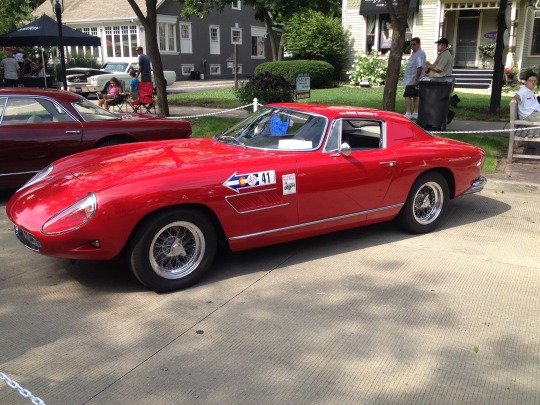

I have posted this beautiful 1958 Ferrari 250 GT Drogo Coupe before, but this time I have more information courtesy of that little board in front of the car. With a 3.0 V12 producing somewhere around 240hp, this 250 GT Drogo could achieve a top speed of 140 mph. This one off body was built by Piero Drogo Carrozzeria Sports Cars in Modena, Italy. The hand formed aluminum panels sit atop a LWB chassis. For the last 20+ years, the car has been raced in vintage racing events as well as numerous long-distance touring events, making it likely one of the higher mileage 250 GTs. These pictures were taken at the Geneva Concours
Follow Carspotting The World for more original content!
#ferrari#250gt#ferrari 250gt#drogo#250gt drogo#classic cars#classic ferrari#cars#car show#car spotting#cars and coffee#concours d'elegance#contentcreator#cars of tumblr#supercars of tumblr#classic cars of tumblr#photography#automotive photography#supercar photography
2 notes
·
View notes
Photo

Ferrari 250 GT by Piero Drogo.
47 notes
·
View notes
Text
The Swedish GTO

This lovely dark blue berlinetta is sitting in front of Carrozzeria Sports Cars in Modena Italy in October 1965. That famous body shop was run by Piero Drogo and created new bodies for many older racing cars which had finished their competitive careers. This example of Drogo’s work started its life as a Ferrari 250GTO. The first owner was Count Giovanni Volpi who probably purchased the GTO…
View On WordPress
0 notes
Text

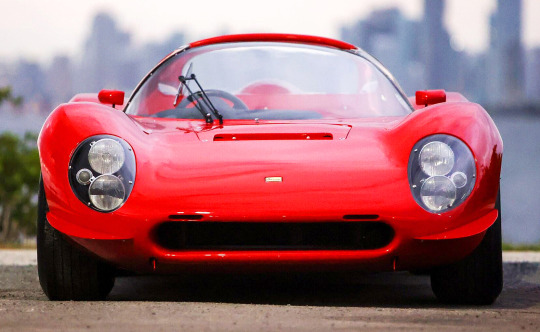
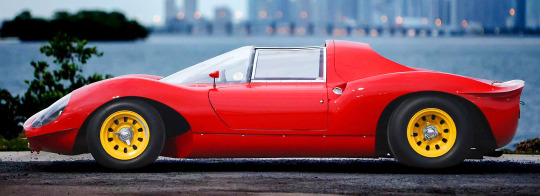
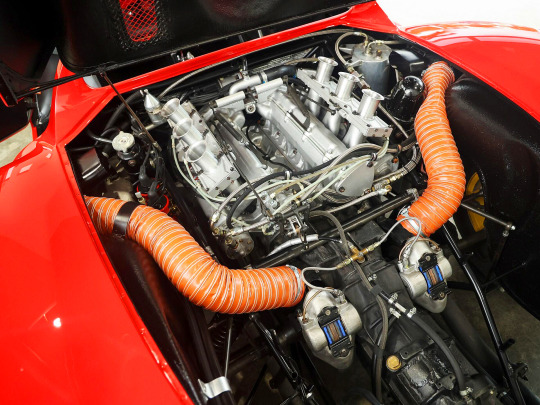
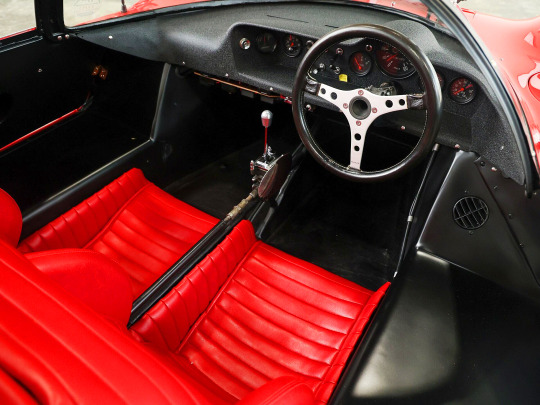
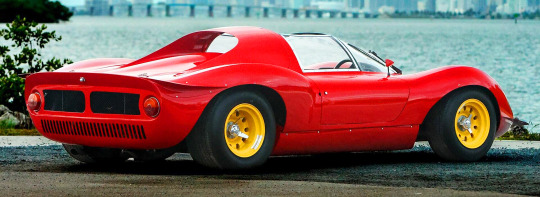

Dino 206 S, 1967. The last of of only 13 examples constructed with Piero Drogo-designed Spyder bodywork and one of only two examples fitted with the most power Tipo 233 engine is being offered in a sealed bid auction. It was restored by Ferrari Classiche in 2014 and is Red Book certified. It was sold new to Corrado Ferlaino, the famous long-term owner of the Napoli Football team and has subsequently featured in a number of the world’s most prominent Ferrari collections.
auction listing
(Note that the auction listing names the car as a Ferrari Dino 206 S though there are no Ferrari badges on the vehicle, these cars were built by Ferrari but only ever sold with a Dino badge)
#Dino#Dino 206 S#Ferrari#race car#V6#Dino V6#1967#Piero Drogo#spyder#open roof#track car#restored#auction#rm sotheby's#sealed bids#last of the line#cars for sale#Ferrari Classiche#dead brands
318 notes
·
View notes
Photo

Piero Drogo´s Cooper F2.Monza , Italian GP 1960.
46 notes
·
View notes
Photo
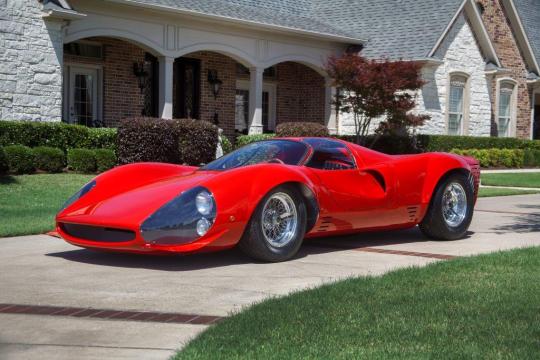

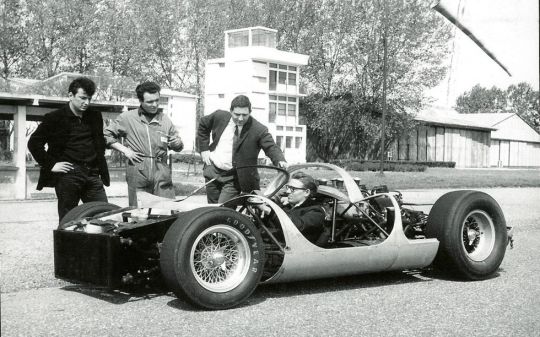
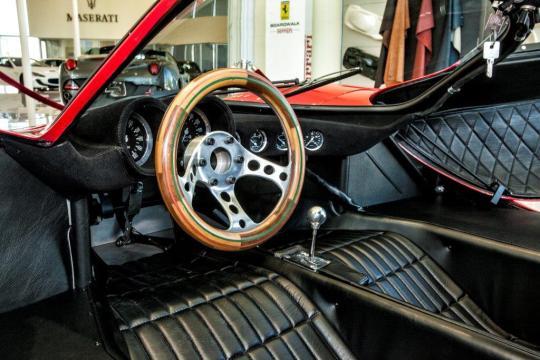

1967 “Ferrari” Thomassima II. The Thomassima was based on a Ferrari 250 GTO but was destroyed when Florence flooded. The second Thomassima is what we see here. It was built for Harry Windsor of California with a body designed and built by racer and coachbuilder Piero Drogo. The chassis: a modified Cooper Climax F1 chassis from the late 1960s. Powering this gorgeous piece of Ferrari history is the “inside-plug” V12 from Ferrari.
388 notes
·
View notes
Text
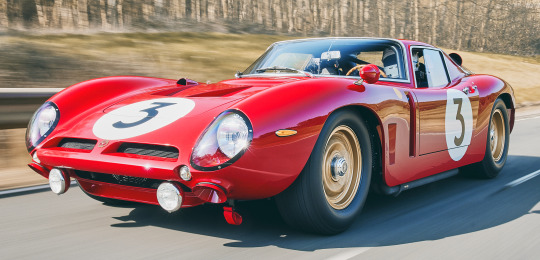

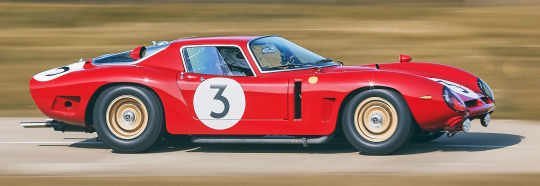
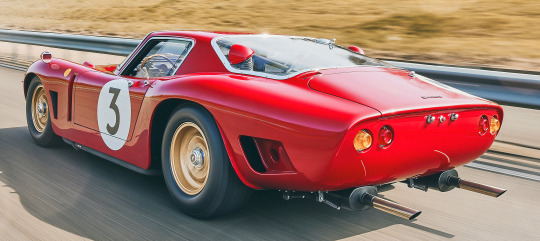
Bizzarrini 5300 GT Corsa Revival, 2022 (1965). A prototype for a revival edition of 24 cars has been completed in the UK. Built using original blueprints, utilising materials from original suppliers, with the input of experts originally involved in the 5300 GT project, some key improvements have been added. First developed as a high-performance variant of the Bizzarrini-engineered Iso Grifo A3C, the 5300 GT Corsa was designed by Giorgetto Giugiaro with refinements by Piero Drogo of Carrozzeria Sports Cars. The revival series are based on chassis 0222 that took the over 5-litre class win at Le Mans in 1965, also finishing ninth overall. The cars will be powered by a period-specific 5,300cc Chevrolet V8 with Weber 45 DCOE (Doppio Corpo Orizzontale E) carburettors developing over 400hp.
#Bizzarrini#Bizzarrini 5300 GT Corsa#revival#revival edition#special edition#replica#1965#2022#race car#track car#Chevrolet V8#327ci V8#Giorgetto Giugiaro#Piero Drogo#24 hours of le mans#Le Mans
301 notes
·
View notes
Photo






Serenissima Agena 3500GT, 1967, by Carrozzeria Drogo Sports Cars. Designed by Piero Drogo, a mid-engined sports car powered by a Massimino Tipo 358 3.5-litre twin overhead cam V8 with twin-spark ignition and four Weber DCN14 carburettors. The project to create Serenissima supercar for the road never progressed beyond this prototype, which sold at auction earlier this year for €441,040
#Serenissima#Serenissima Agena#Serenissima Agena 3500GT#Drogo#Carrozzeria Drogo Sports Cars#Piero Drogo#DOHC#mid-engine#prototype#1967#1960s#supercar#Massimino#V8#dead brands
362 notes
·
View notes
Photo

Porsche 550 RS Spyder Spezial, 1955, by Drogo. A one-off designed by Piero Drogo and built by Carrozzeria Drogo Sports Cars using the chassis of a crashed 550 Spyder
#Porsche#Porsche 550 RS Spyder Spezial#1955#Drogo#Carrozzeria Drogo#Piero Drogo#1950s#one-off#race car#track car
71 notes
·
View notes
Text
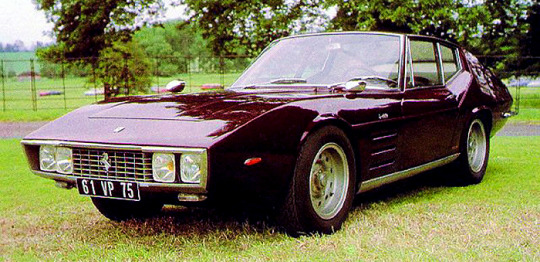
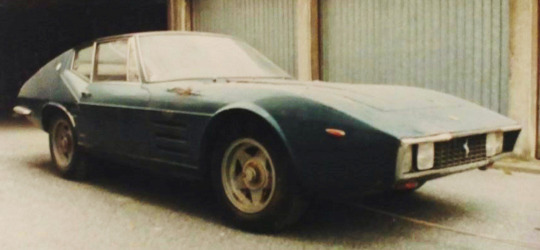
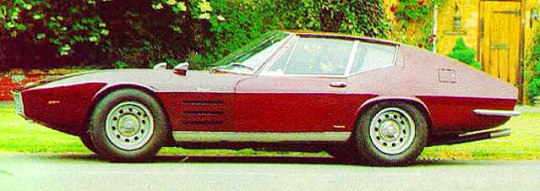
Ferrari 250 GT Berlinetta Drogo, 1968 (1959). Ferrari 1959 250GT chassis 2209 was sold to Gastone Crepaldi, the Ferrari dealer for the Lombardy region in 1967. A year later he commissioned Piero Drogo’s Carrozzeria Sports Cars in Modena to build a modern new body following a design by Tadini. After several owners, DK Engineering conducted a total restoration, replacing the Drogo/Tadini styling with an original 250 GT SWB Pininfarina style body. The fate of the Drogo bodywork is unclear, one source has the last owner keeping the body for a while but then scrapping it and keeping only the rectangular radiator grille with headlights as a trophy for his garage wall, but other sources state that the Drogo body had been reused. Anyone seen it?
#Ferrari#Ferrari 250 GT Berlinetta#Ferrari 250 GT Berlinetta Drogo#coachbuilt#1968#Carrozzeria Sports Cars#one-off#special body#Tadini
212 notes
·
View notes